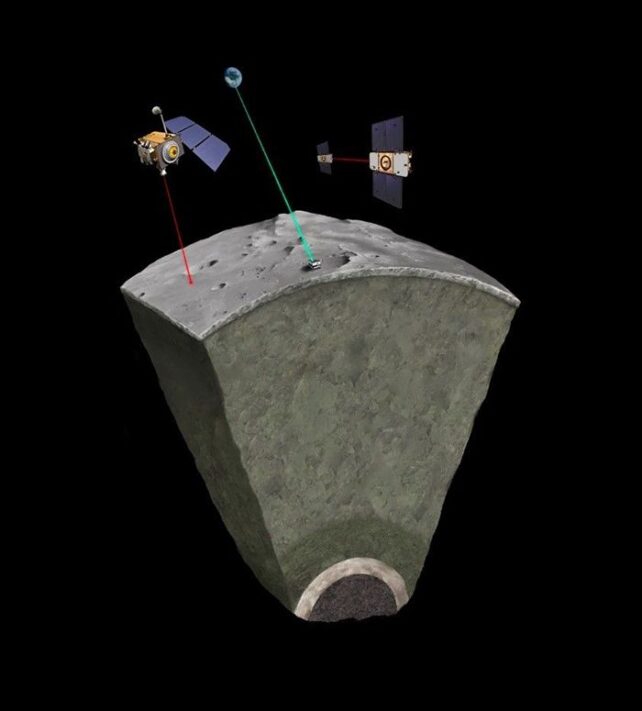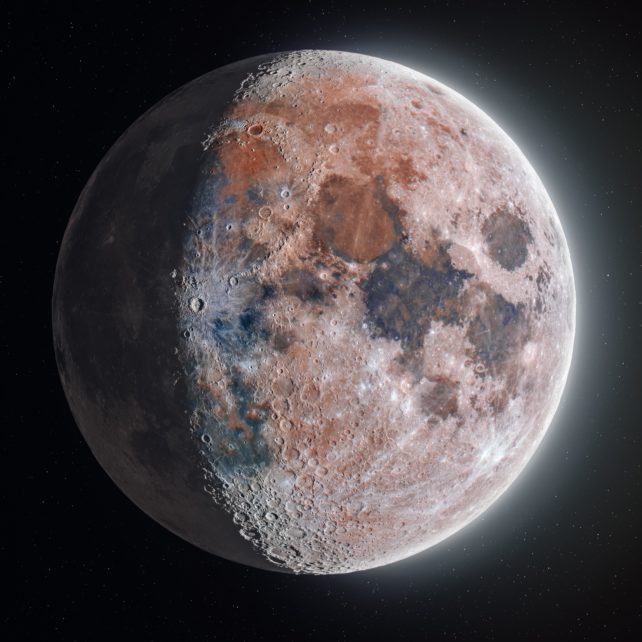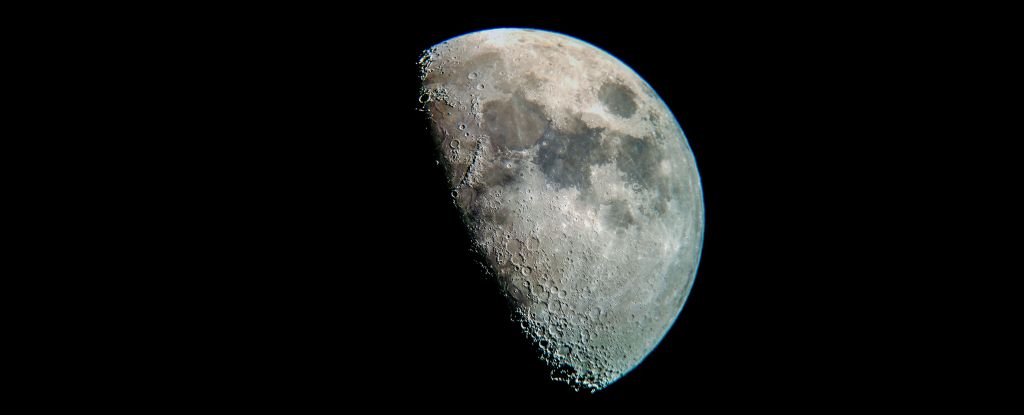Products You May Like
Well, the verdict is in. The Moon is not made of green cheese after all.
A thorough investigation published in May 2023 found that the inner core of the Moon is, in fact, a solid ball with a density similar to that of iron. This, researchers hope, will help settle a long debate about whether the Moon’s inner heart is solid or molten, and lead to a more accurate understanding of the Moon’s history – and, by extension, that of the Solar System.
“Our results,” wrote a team led by astronomer Arthur Briaud of the French National Centre for Scientific Research in France, “question the evolution of the Moon magnetic field thanks to its demonstration of the existence of the inner core and support a global mantle overturn scenario that brings substantial insights on the timeline of the lunar bombardment in the first billion years of the Solar System.”
Probing the interior composition of objects in the Solar System is most effectively accomplished through seismic data. The way acoustic waves generated by quakes move through and reflect from material inside a planet or moon can help scientists create a detailed map of the object’s interior.
We happen to have lunar seismic data collected by the Apollo mission, but its resolution is too low to accurately determine the inner core’s state. We know there is a fluid outer core, but what it encompasses remains under debate. Models of a solid inner core and an entirely fluid core work equally well with the Apollo data.
To figure it out once and for all, Briaud and his colleagues collected data from space missions and lunar laser-ranging experiments to compile a profile of various lunar characteristics. These include the degree of its deformation by its gravitational interaction with Earth, the variation in its distance from Earth, and its density.

Next, they conducted modeling with various core types to find which matched most closely with the observational data.
They made several interesting findings. Firstly, the models that most closely resembled what we know about the Moon describe active overturn deep inside the lunar mantle.
This means that denser material inside the Moon falls towards the center, and less dense material rises upwards. This activity has long been proposed as a way of explaining the presence of certain elements in volcanic regions of the Moon. The team’s research adds another point in the “for” tally of evidence.
And they found that the lunar core is very similar to that of Earth – with an outer fluid layer and a solid inner core. According to their modeling, the outer core has a radius of about 362 kilometers (225 miles), and the inner core has a radius of about 258 kilometers (160 miles). That’s about 15 percent of the entire radius of the Moon.
The inner core, the team found, also has a density of about 7,822 kilograms per cubic meter. That’s very close to the density of iron.

Curiously, in 2011 a team led by NASA Marshall planetary scientist Renee Weber found a similar result using what were then state-of-the-art seismological techniques on Apollo data to study the lunar core. They found evidence of a solid inner core with a radius of about 240 kilometers, and a density of about 8,000 kilograms per cubic meter.
Their results, Briaud and his team say, are confirmation of those earlier findings, and constitute a pretty strong case for an Earth-like lunar core. And this has some interesting implications for the Moon’s evolution.
We know that not long after it formed, the Moon had a powerful magnetic field, which started to decline about 3.2 billion years ago. Such a magnetic field is generated by motion and convection in the core, so what the lunar core is made of is deeply relevant to how and why the magnetic field disappeared.
Given humanity’s hope to return to the Moon in relatively short order, perhaps we won’t have long to wait for seismic verification of these findings.
The research has been published in Nature.
A version of this article was first published in May 2023.
